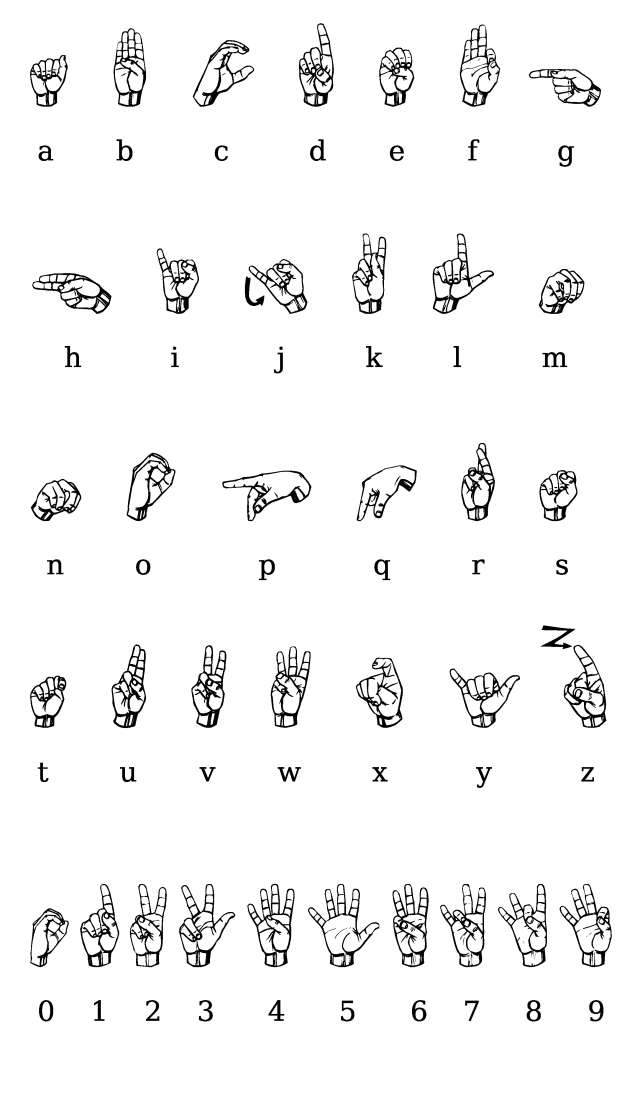Difference between revisions of "AY Honors/Sign Language/Answer Key"
| (One intermediate revision by the same user not shown) | |||
| Line 14: | Line 14: | ||
As with the letter ''O'', the zero should not be turned to the side, but shown palm facing forward. | As with the letter ''O'', the zero should not be turned to the side, but shown palm facing forward. | ||
| − | This applies only to the cardinal numbers however. Using numbers in other situations, as with for showing the digits of the time for example, has | + | This applies only to the cardinal numbers however. Using numbers in other situations, such as with for showing the digits of the time for example, has different rules. When signing the time, the numbers are always facing the person being addressed, even the numbers one through five. Other signing situations involving numbers have their own norms that must be learnt on a case by case basis. |
==How the manual alphabet is used== | ==How the manual alphabet is used== | ||
Revision as of 02:01, 20 September 2005
The American Sign Language alphabet is a manual alphabet that augments the vocabulary of American Sign Language when spelling individual letters of a word is the preferred or only option, such as with proper names or the titles of works. Letters should be signed with the dominant hand and in most cases, with palm facing the viewer.
Common mistakes made by beginners
Many mistakes made by beginning fingerspellers are directly attributable to how the manual alphabet is most often shown in graphics.
Mistakes with letters
In most drawings or illustrations of the alphabet, some of the letters are depicted from the side to better illustrate the desired handshape even though, in practice, the hand should not be turned to the side in order to produce the letter. The letters C and O are two that are often mistakenly turned to the side by beginners who become used to seeing them from the side in illustrations. Important exceptions to the rule that the palm should always be facing the viewer are the letters G and H. These two letters should be made, not with the palm facing the viewer or the speaker, but with the palm facing sideways - the hand in an ergonomically neutral position.
Mistakes with numbers
Another mistake made by people faithfully following the pictures in most illustrations of the ASL fingerspelling alphabet is the signing of the cardinal numbers 1 - 5 with the palm facing out. The cardinal numbers one, two, three, four, and five should be signed palm in (towards the signer). This is in contrast with the cardinal numbers six through nine which should be produced with the palm turned to face the person being addressed.
As with the letter O, the zero should not be turned to the side, but shown palm facing forward.
This applies only to the cardinal numbers however. Using numbers in other situations, such as with for showing the digits of the time for example, has different rules. When signing the time, the numbers are always facing the person being addressed, even the numbers one through five. Other signing situations involving numbers have their own norms that must be learnt on a case by case basis.
How the manual alphabet is used
To learn more about how the American Sign Language alphabet is used and how to avoid common fingerspelling mistakes made by inexperienced signers, see the article on fingerspelling in the (see also) list.

